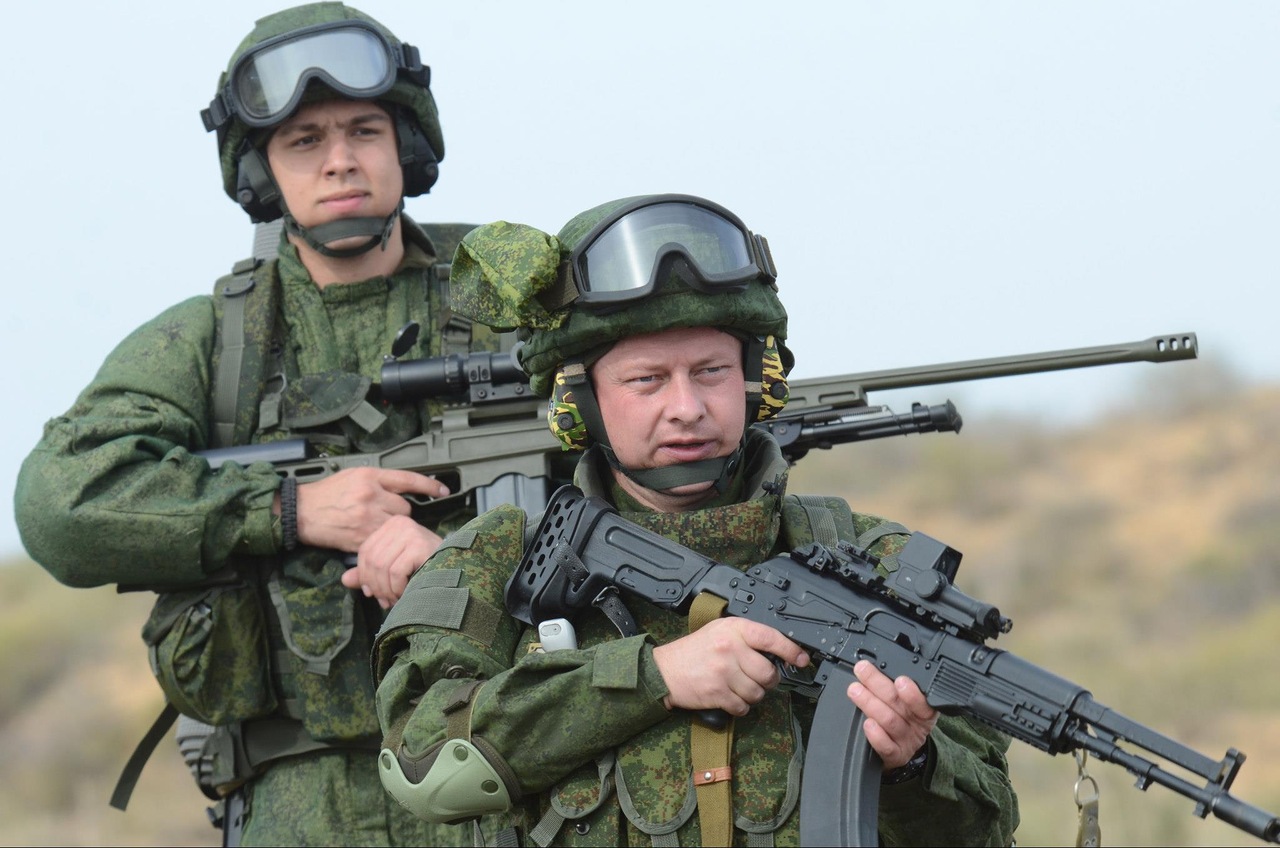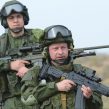
Moscow Displays New Military Hardware Amid Rising Tensions (Part Two)
Publication: Eurasia Daily Monitor Volume: 12 Issue: 84
By:

Russia’s triumphal display of apparent military strength during the annual Victory Day Parade is partly aimed at masking the dearth of foreign leaders attending the 70th anniversary celebration of the end of the Great Patriotic War, as well as showcasing some advances in weapons and equipment modernization. Pride of place is given to the long promised new generation T-14 main battle tank (Armata) and its chassis as the basis for modernized combat infantry and support vehicles (see Part One in EDM, April 28). However, given the economic downturn and the projected cost of the prototype T-14, it is doubtful as to how many of the 2,300 tanks the army plans to purchase will eventually enter service by 2020. During the conflict in Ukraine, Russia has field-tested new systems and will introduce modernized equipment in the next few years. The areas receiving less attention than the high-profile displays on Red Square on May 9, reveal more about the direction of Russia’s military modernization.
These less transparent elements of Russia’s military modernization, despite economic pressures to scale back its ambitious program, were also present in Russian Armed Forces’ activities in Ukraine. This includes the advanced “Ratnik” (warrior) integrated individual soldier system, some of which featured in the appearance of elite units characterized as “polite people” in the seizure of Crimea in February–March 2014, and the introduction of cutting-edge Electronic Warfare (EW)—radioelektronnoy bor’by (REB)—systems. Such developments offer insight into Russian military development and its level of sophistication, establishing an underlying need to enhance manpower capacity from professional recruitment and retention to higher standards in training and career progression.
In November 2014, the defense research institute overseeing the work of numerous companies responsible for manufacturing the new soldiers’ combat gear system, Ratnik, announced a contract to supply 50,000 units annually for the defense ministry. Dmitry Semizorov, the director of the Tochmash central research institute of precision engineering confirmed the contract and added that some units of Ratnik had already been delivered to the defense ministry. However, he also stated that the priority customers for the Ratnik units would be Special Forces and Airborne Forces. In this sense, although the Ratnik units will also enter into the inventory of the Ground Forces, elite units are its main recipients (Interfax, November 5, 2014). Nonetheless, the numbers of these deliveries, planned to reach 50,000 annually, demonstrate the defense ministry’s plans for such sophisticated systems to reach the ordinary rank and file.
The Ratnik kit, therefore, sends a signal to observers of Russian military development concerning a trend toward greater high-technology and complexity in systems entering service. Ratnik is constructed on a modular system, meaning that individual items within its parameters, such as scopes or precision devices, can be replaced or upgraded without having to redevelop the entire kit. Ratnik fits the image of the “polite people” with advanced and modern combat equipment for individual Russian troops. This includes: protective overalls with fire resistant fabric for protection against shrapnel or other blasts; protective armor, including helmet coverage, to protect vital organs; automatic gun equipment and night vision scopes, thermal imaging system and collimator sight (video module for firing); headphones and protective eye gear; as well as various packs and utility equipment to be carried by the soldier. It offers an integrated management system, allowing commanders to exercise command and control using the latest digital technologies. The Ground Forces, if all proceeds according to existing plans, will be fully outfitted with Ratnik units by 2020 in order to increase the overall effectiveness of combat missions (Voyenno Promyshlennyy Kuryer, October 15, 2014; Krasnaya Zvezda, September 24, 2014).
Russia’s ongoing modernization of its EW capabilities is intended to correct some if the existing weaknesses in these areas, especially in relation to the Strategic Rocket Forces, as well as enhancing jamming of enemy radars and integrating EW with unmanned aerial vehicle (UAV) technology. Testing and introduction of more advanced EW capabilities also extends to the Eastern Military District (MD), which seems to serve as a testing ground for some EW models (TASS, April 29; RIA Novosti, April 28). In early 2015, for example, Eastern MD was, reportedly, due to receive modern Krasukha-S4 systems for its EW subunits. The system attacks modern radars used onboard several aircraft platforms as well as on UAVs (Gazeta.ru, January 30).
Such advances in Russian EW technology can be seen in how this is applied to UAV designs. Reportedly, deliveries of UAVs to the Armed Forces increased in 2014 by a “factor of four,” year-on-year, mainly in the area of aerial reconnaissance and surveillance. UAV assets, consequently, are now available to most of the Russian Ground Forces units, and off-the-record author discussions with analysts of Russia’s operations in Ukraine suggest that UAVs have been used by frontline forces (rather than from rear services). One area of experimentation is to use UAVs to cause enemy cell phone blackouts in certain sectors (Moskovskiy Komsomolets, January 2; Vechernyaya Moskva, December 24, 2014; Rossiyskaya Gazeta, December 16, 2014).
Recognizing the critical importance of EW in support of modern military operations, the defense ministry has assigned high priority to developing and modernizing such capabilities. Indeed, Russian military thinking in this sphere also considers the question of how to overcome asymmetrically a combat deficit against a superior opponent, and concludes that this may be possible by targeting enemy command-and-control systems and, essentially, shutting them off. Thus, the General Staff appears to assess the prospects of using EW technology to compensate for conventional force weakness deployed against a superior military by attacking enemy systems and subsystems using EW prior to reaching the nuclear threshold. A highly controversial claim linked to this theme is the use of the Khibiny EW complex against USS Donald Cook in the Black Sea. Allegedly, the system was used to jam all the onboard electronics on the Donald Cook, resulting from a single Su-24 flying unarmed toward the vessel; according to various claims and reports, the Cook was reduced to a “floating turtle.” If true, such EW could, in theory, shut down the operation of the Aegis system (Voyenno Promyshlennyy Kuryer, March 16; Moskovskiy Komsomolets, January 2).
Indeed, it is in these less obvious modernization priorities that a sharper image comes into focus to show the future shape of Russia’s Armed Forces, rather than in the hardware displayed on Red Square. But such high-technology advances will demand further improvements in the vital component of military manpower.




